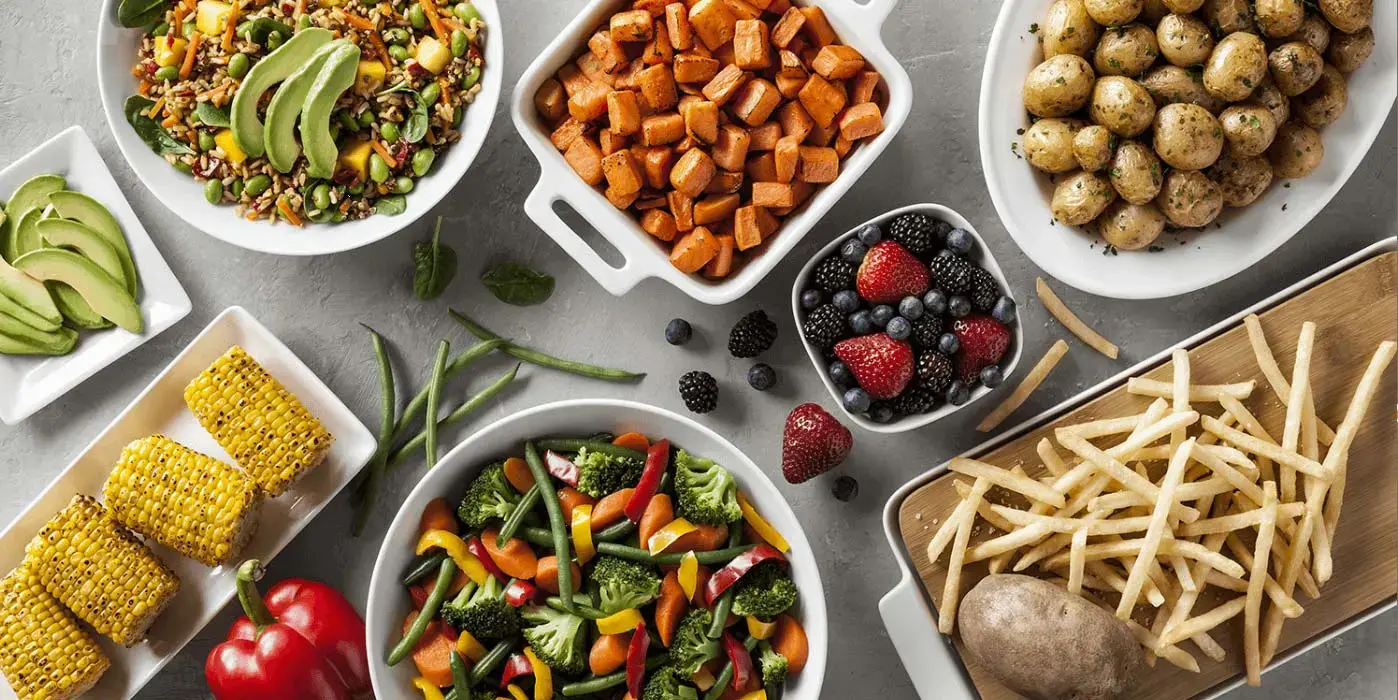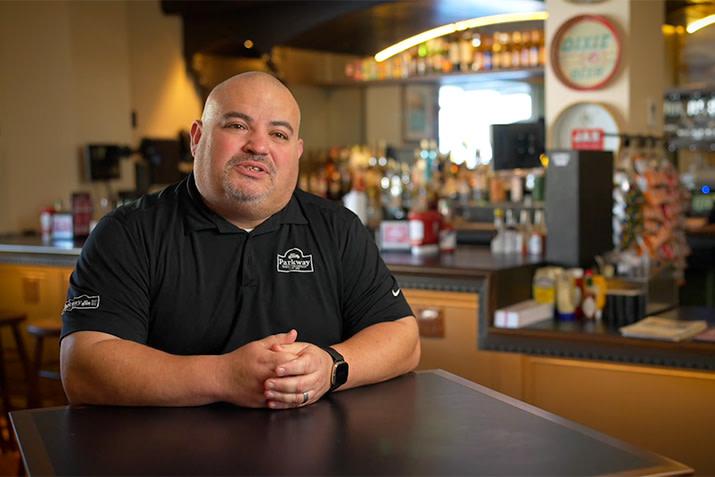Historias de cocina
Purdue University adopta granos congelados para igualar la tendencia vegetal y reducir la mano de obra
9/28/2020

La tendencia hacia los platillos a base de plantas ha ganado mucha atención en los últimos años, y en gran parte se debe a los estudiantes universitarios son.
“Todos estamos buscando opciones más saludables. Los productos de origen vegetal son la opción hacia la que estos niños orientan sus elecciones”, dice Darcy Smink, Sous Chef Ejecutivo de Purdue University en West Lafayette, Indiana.
Reemplazar los productos animales por alternativas a base de plantas es mucho más popular entre la generación Z (56 %) y los millenials (45 %) que entre los boomers (28 %). Alrededor de uno de cada tres miembros de la generación Z come proteínas que sean de origen vegetal al menos una vez por semana.1
En el campus, los estudiantes de la generación Z que tienen en cuenta temas como el cambio climático y el bienestar animal aprecian sus beneficios ambientales y la sostenibilidad de las opciones a base de plantas, en relación con otras opciones de alimentos. Así que no es de extrañar que tantos estudiantes estén buscando activamente platillos de origen vegetal en los comedores.
Los granos antiguos cumplen con todos los requisitos, excepto uno
Los granos antiguos como la quinoa, el cuscús y el arroz integral pueden ser importantes para satisfacer el hambre de los platillos de origen vegetal. Repletos de nutrientes importantes y fibra, estos granos son bien conocidos entre los consumidores que se preocupan por la salud. Para aquellos ajenos a su bondad nutricional, solo saben muy bien ya sea como acompañamiento, en recetas, sobre una ensalada o como base en conceptos de armar tu tazón siempre populares.
A pesar de estos beneficios, los granos preparados a partir de productos a granel secos tienen una desventaja significativa, según el chef Smink: un proceso de preparación largo y demandante.
“Se necesita mucha capacitación. Remojar granos durante la noche, asegurarte de que el arroz no esté demasiado cocido o crudo, con mano de obra estudiantil, es un desafío para nosotros“, dice el chef Smink. “Todos los granos tienen diferentes tiempos de cocción y los chefs no siempre usan el mismo equipo para cocinarlos, así que la capacitación también es un desafío“.
¿Realmente tiene sentido preparar granos secos desde cero?
Mike Kepner, gerente de proteínas de la universidad, y Misty Snyder, gerente de abastecimiento estratégico, siempre están buscando maneras de mantener la alta calidad de los alimentos de Purdue con menos dinero. Cuando Simplot propuso reemplazar sus granos secos con Simplot Good Grains™ (granos y combinaciones totalmente cocidos y congelados), reconocieron de inmediato las ventajas operativas de su preparación lista para calentar y servir. Sin embargo, el costo fue el punto crítico.
En términos de costo por libra, los granos congelados de Simplot son más caros que los secos, pero Snyder sabía que el costo de la mano de obra debía ser considerado antes de tomar una decisión.
“Voy a desglosar todo esto”, dice, recordando los cálculos que realizó. “Este es tu gasto, lo estamos trasladando de mano de obra, estamos eliminando eso del tiempo, lo estamos asignando a producción. Estamos aliviando estas áreas, así que estamos moviendo el dinero a donde debe estar”.
Una vez que se tuvo en cuenta el costo de la mano de obra, Good Grains™ tenía más sentido que los granos secos. Para Kepner, la escasez de mano de obra en la cocina en 2019 también desempeñó un papel importante en su decisión de incorporar productos congelados Good Grains™.
“Pensamos que esta era una excelente oportunidad, especialmente con el problema de tener suficientes personas para cocinar el producto”, dice.
“Recuerdo haber pensado, ‘Esto es una locura’”.
Luego fue el momento de presentar la idea de usar granos congelados al personal culinario de Purdue, un grupo que se enorgullece de la calidad de la comida que se sirve en sus comedores. Cuando Snyder planteó el tema de cambiar a granos congelados, sus chefs desconfiaron.
“Me miraron como si dijeran, ¿de qué hablas con eso de un grano congelado? No se congelan los granos”, recuerda Snyder.
“Recuerdo haber pensado, esto es una locura”, dice el chef Smink. “Estaba muy cauteloso acerca del producto hasta que lo tuve en mis manos y vi las opciones. Entonces, la parte divertida fue que vimos la lista de diferentes productos y los chefs comenzaron a pelearse por quién quería qué sabor. Fue muy gracioso”.
La calidad y la preparación flexible de Good Grains™ finalmente la convencieron.
“El color es excelente. La presentación es excelente. Se mantiene, como dije, en los calentadores de vapor, y es literalmente algo que podemos hacer en cinco minutos”, dice. “Uno de mis favoritos, y el que servimos con bastante frecuencia, es nuestro cuscús de chorizo y camarones con la mezcla de quinoa roja y verduras. Las verduras están cortadas de manera hermosa. Son coloridas. La preparación es rápida. Las opciones se pueden combinar con todo tipo de otros ingredientes y cosas divertidas”.
La versatilidad de los productos también fue clave.
“Es un excelente relleno para tacos. Puede ser un buen relleno de enchilada. También es un excelente acompañamiento y es rápido. El color es excelente, la presentación es excelente. Se mantiene en los pozos de vapor y es literalmente algo que podemos hacer en cinco minutos”, dice Smink.
El chef Heath Browning coincide: “Prefiero ponerlos en la plancha, con un poco de aceite caliente y cocinarlos de esa manera, solo porque les da un toque tostado y una textura adicional. También funciona muy bien al vapor”.
Alimentación saludable fácil para los estudiantes
Los comentarios de los estudiantes y el personal han sido abrumadoramente positivos, pero Smink tiene otra manera de medir la popularidad de un producto.
Siempre observo qué están comiendo los comensales. Quiero ver qué sucede. ¿Están sus platillos llenos y luego vacíos cuando los llevan al área de lavado? Así es como lo sé”, dice. “Los granos antiguos y la col rizada son un excelente producto. Puedo hacer que estos niños coman col rizada, y eso me parece gracioso porque no es fácil”.
1. Datassential SNAP™ Keynote, 2018
- Beneficios de lo congelado
- Colegio y universidad
- Delicatesen
- Desde la cocina de prueba
- Entrega
- Festividades
- Historias de cocina
- K-12
- Mano de obra y personal
- Mercadeo
- Minorista
- Noticias
- Papas a la francesa
- Planificación de menú
- Productos nuevos
- Recursos sobre la Covid-19
- Restaurante de servicio completo
- Restaurante de servicio limitado
- Sostenibilidad
- Tendencias alimentarias
- Trend Feast
- Vegetales
- Healthcare



